Photos: Fourth Winter Lionfish Derby A Success
The fourth Winter Lionfish Derby, sponsored by Conyers Imports was held from January 1 through January 31, with a wrap-up party and awards ceremony taking place at the Bermuda Underwater Exploration Institute [BUEI] recently.
A spokesperson said, “Here’s a few things about the very successful winter Lionfish Derby. For starters, we had 60 people registered for the derby, compared to 35 last year. Those 60 people caught 624 lionfish, comapred to 209 last year.
“It’s amazing that twice the number of hunters managed to catch three times the amount of fish. Amazing and scary. It really emphasizes that lionfish are very abundant in shallow water during the winter. The average depth of capture was less than 20 feet and many were caught in less than 10.
“We also saw far more small lionfish than ever before, which is also alarming as it may indicate a more successful reproductive period in 2017. The smallest lionfish was 3.75in, for example, far smaller than the smallest I’d seen before, which was 4.9in.
“Atlantic Lionshare, a Bermudian company that has created a Remotely Operated Vehicle to hunt lionfish, was in attendance and and showed a video of their underwater machine successfully catching many lionfish at depth. They also donated some cash to the derby, along with Bermuda Apnea.
.
“Even though we had more people than ever before, we were fortunate to provide everyone who registered with some sort of prize thanks to Gorham’s, Makin Waves, BUEI, La Garza jewelers, Blue Hole Watersports, Dive Bermuda, Blue Water Divers, and Jessica Reiderer.
“The Bermuda Lionfish Task Force donated all the money for cash prizes and BUEI provided the room free of charge. Harbourfront gave us a pretty nice deal on catering and drinks, as well. Having mentioned everyone else, I hope, its worth mentioning also that Conyers Imports supported the derby by shipping in our official hooded sweatshirts free of charge, a huge expense otherwise.
Here are the winners:
Freedivers:
- Most lionfish: 133. Team name: We Dive at Five; Members: James “Herbie” Adderly, Mark Outerbridge, and Jamie Fraser
- 2nd most: 115. Team name: Natural Born Killers; Members: Chris Cabral, Sean Correia, and Trevor Rawson
- 3rd most: 109. Team name: Iron Lion Zion; Members: Will Gillett, Treshun Correia, Jon Pedro, and Andrew Conyers
Scuba:
- Most lionfish: 49. Team name: LionSquish; Members: Kryz Puciaty, Sandor Arany, Marc Saunders, and Diane Goegler
- 2nd most: 33. Team name: Moldy Second Stage; Members: Kweshon Hollis, JD Symonds, Rafal Burdon, Marc Wynne, and Derek Fisher.
- 3rd most: 13. Team name: SCUBA Salseros; Members: Adrienne Smatt, Magic Boyles, Giovanni Lema, and Jacoby Darrell
Biggest lionfish: 18in [45.75cm] caught by Lee Conway
Smallest lionfish: 3.75in [9.6cm] caught by Chris Cabral
“Also, maybe if interest, there’s been a new publication about the efficacy of lionfish tournaments: “Mobilizing volunteers to sustain local suppression of a global marine invasion”. First, I can get you a copy if you need. Otherwise, try this here.
“One line that stands out is that “Culling by volunteers may be a useful tool in areas where exotic species are easily identified and safely captured, and culling can be promoted as an ongoing recreational activity.” I believe that is especially true in our case, as the lionfish invasion appears to have developed at a slower pace that other regions.
“That is not to say the population may yet experience a period of explosive growth, common in the majority of invasive species, which is exactly what we worry about with the record number of lionfish captured in this year’s winter derby. Going back to the point made in the above quote, our culling program may give us an advantage in staying one step ahead of the invasion.
“We have an army of lionfish hunters and we need to keep them in the water; tournaments such as the Winter Lionfish Derby and Groundswell’s annual summer tournament, are great opportunities to do that. In fact, we have tournaments of some sort every season and the spring tournament is right around the corner.
“That paper is “the first to empirically demonstrate that engaging volunteers in invasive species control can affect and sustain local suppression to a level forecast to alleviate predation effects.” The paper goes on to say “annual events like derbies could be supplemented with culling between events”, which of course is exactly what we do at the Bermuda Lionfish Culling Program.
“So the bottom line of that paper is that tournaments and derbies can reduce the population of lionfish. With that in mind, the winter derby, and all of our lionfish tournaments, may well have made a dent.”
Click to enlarge photos:







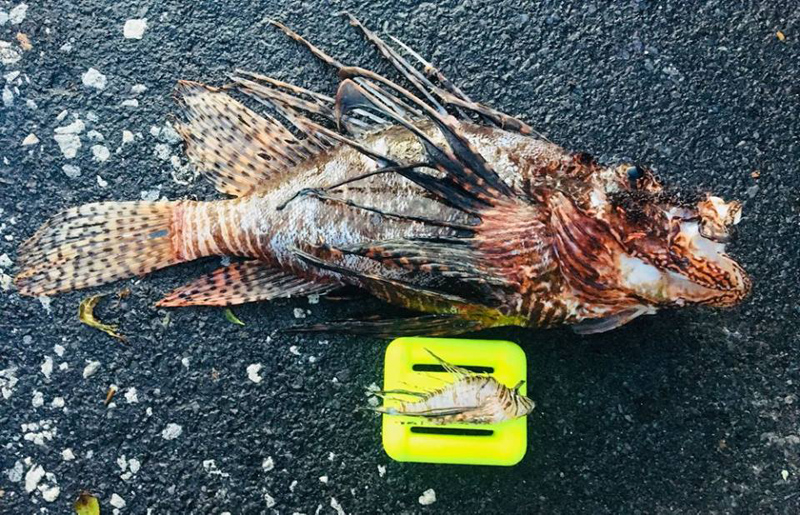






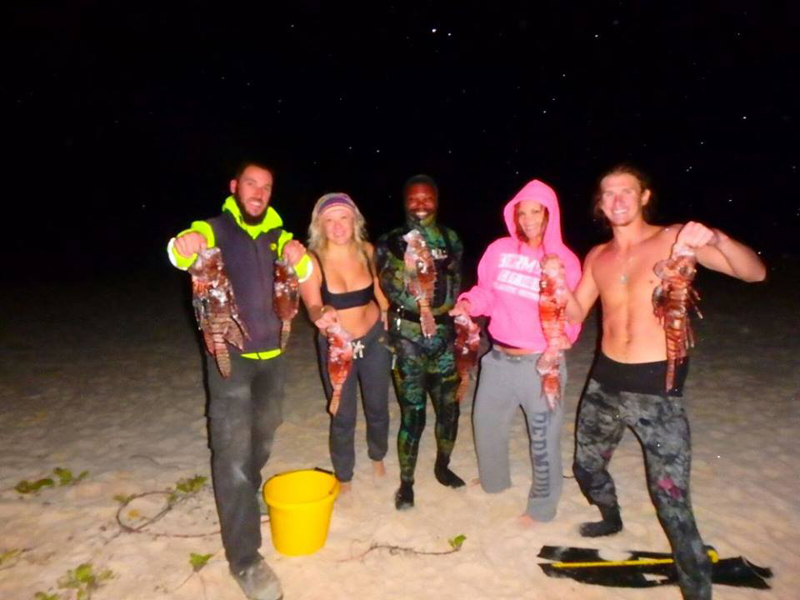






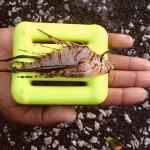

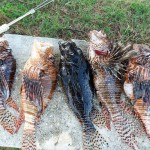

















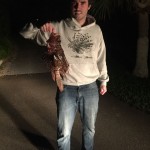





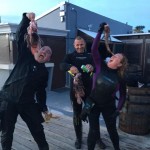


their number don’t look like they are reducing
Well at least these fantastic people are ding what they can!
Nice work, are the black lionfish a different type to the more common reddish brown ones?
While there are two species of lionfish in Bermuda, the common red lionfish and its cousin the devil firefish, the dark black pigment if that individual is likely related to diet, habitat use, or simple genetics, although it may also be a stress response to being speared.
Thanks, that’s interesting never heard of the devil firefish.
Bermudians do not recognize the Lion fish issue as a National Emergency. Bermuda’s fish life is far from abundant and with the lion fish’s ravenous consumption of our juvenile fish the consequences for our reef system could be catastrophic in 5 to 10 years.
And that’s why so many are taking everything they can now.
Take the money and run’ overseas.